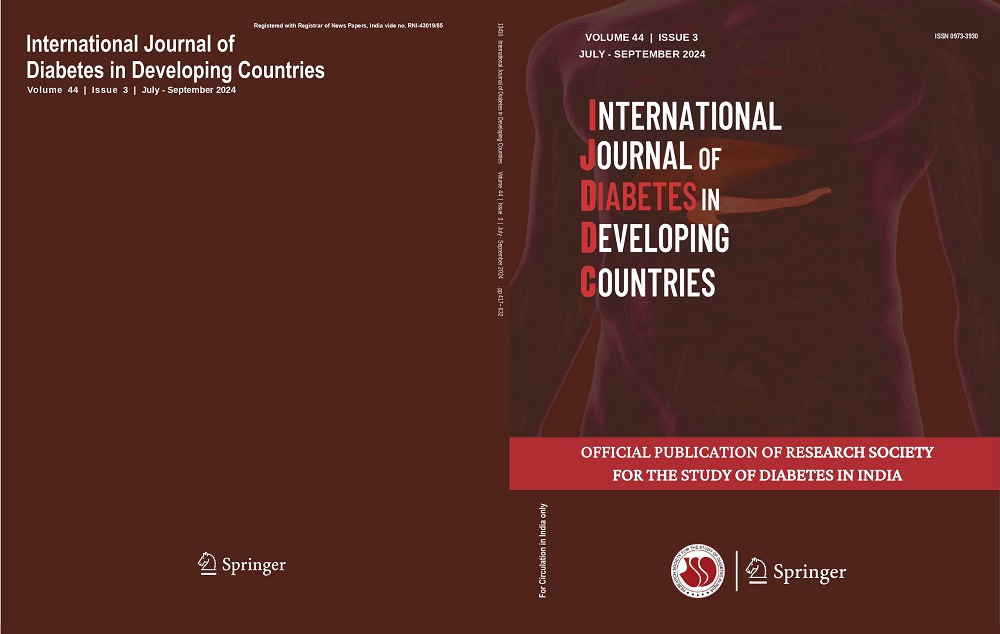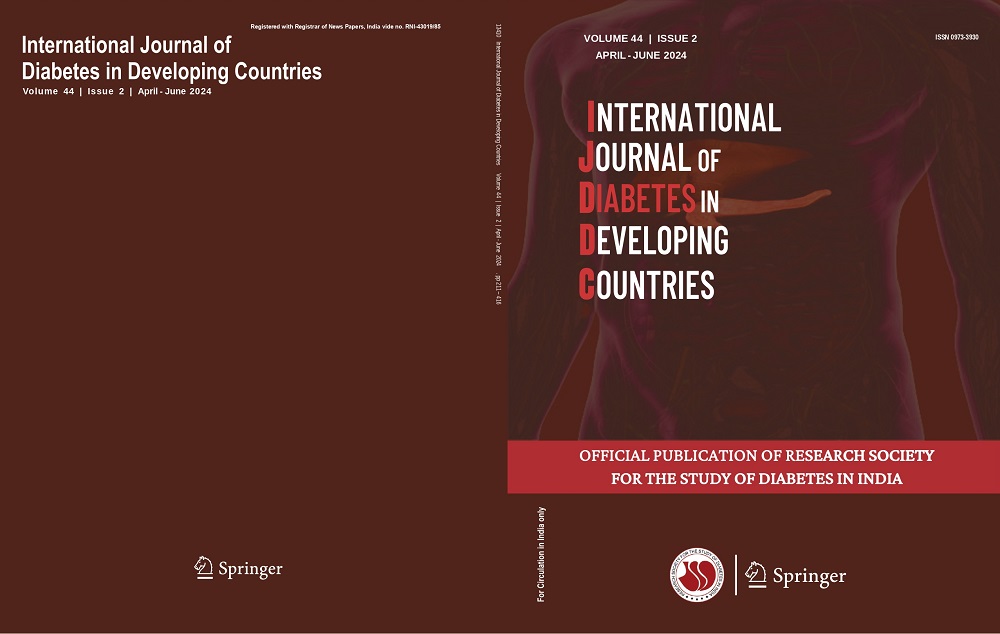Rajeev Chawla, Hema Divakar
It is estimated that around 537 million people are currently living with diabetes globally, and it is expected to increase to more than 643 million people by 2030 [1]. Women with a history of GDM have an 8–tenfold higher risk of developing type 2 diabetes which is highest 3–6 years after a GDM pregnancy [2] and a twofold higher risk of developing cardiovascular disease (CVD) compared with women without prior GDM. Gestational diabetes mellitus (GDM)being most common medical complication of pregnancy is characterized by hyperglycemia recognized first time during pregnancy that although usually resolves immediately postpartum but still carries long-term risks [3]. Women who fail on MNT and require particularly insulin, to achieve euglycemia in pregnancy, are at high risk to progress to type 2 diabetes [4] . This may be because of the fact that those pregnant females requiring insulin indicates the beta cell insufficiency to compensate for increasing insulin resistance as a consequence of pregnancy-induced metabolic changes. Hence, women treated with insulin in pregnancy are at three fold increased risk of type 2 diabetes progression, compared with GDM women who did not require insulin treatment to achieve euglycemia in pregnancy [5].
Several clinical scenarios are likely to progress to type 2 diabetes more frequently. These include the following: (A) gestational age at diagnosis of GDM, (B) hyperglycemia diagnosed in the first trimester, (C) history of GDM in an earlier pregnancy, (D) the degree of glucose intolerance and insulin requirement during pregnancy, (E) excessive weight
gain during pregnancy, and (F) inability to shed pregnancy-induced weight gain postdelivery and shorter duration of breast feeding. Longer duration of follow-ups in the postpartum period will also increase the rates of diagnosis of type 2 diabetes, hence, proving an opportunity for early intervention.
There are, however, huge challenges after an index pregnancy in postpartum testing for ongoing prediabetes and diabetes. This is simply being recommended in all international or national guidelines, but never being undertaken because of mismatch between the desire to detect all women at risk and the need for a practical testing regimen that should be implemented into routine clinical practice. A recent study by Balaji et al. [6] excellently summarized the varying recommendations made by various national and international professional bodies. Most of these recommend a formal OGTT at around 6–12 weeks postpartum. Postpartum screening for glucose intolerance 2-day postpartum glucose tolerance test has similar diagnostic value as 6- to 12-week postpartum glucose tolerance tests in predicting impaired glucose metabolism and diabetes at 1 year after delivery and are associated with nearly 100% adherence to the test. Thus, changing the timing of the glucose tolerance test in Indian pregnant females may be more productive and feasible [7,8] than conventionally postpartum screening at 6–12 weeks by OGTT suggested by FIGO. The OGTT remains the gold standard for detection of diabetes. However, this test is time consuming as it requires fasting and multiple blood draws making this cumbersome and impractical. The HbAic test could alleviate these issues but may be costly and unaffordable in LMIC (low- and middle-income countries) settings. HbA1c appears attractive as a postpartum screening test as there is no need for fasting. However, a systematic review reported [9] a low sensitivity (36%) and moderate specificity (85%) for diabetes using HbA1c so recommended that it was not a suitable test for postpartum diagnosis among women with GDM. Even evaluation of fasting glucose was found to have a low sensitivity (29%) for diabetes [10] . Currently, a combined strategy including using both HbA1c and fasting glucose to determine the need to proceed to a formal OGTT showed high sensitivity (82%) and specificity (92%) and avoided 70% of the OGTT burden. Combination of HbAic and fasting glucose has not been incorporated into any of the recent guidelines yet.
Absence of protocols and standardized postpartum care for women has been a major barrier. Proactive guidelines for postpartum follow-up will improve adherence once in place. Additionally, providing an option for home blood sample collection for completing the OGTT has been shown to increase the rate of follow-ups [11] . Even sending reminders to patients to return for follow-up by telephone, e-mail, or SMS increased the odds of a postpartum visit threefold compared with no reminders [12]. Here, use of mobile health (mHealth) technology-specifically mobile applications on smartphones to deliver individual-level care above traditional clinic-based care-provides a unique opportunity to communicate with and motivates women during pregnancy to return for postpartum follow-up [13].
The postpartum period must be viewed as an important window of opportunity to identify women with a higher risk of type 2 diabetes and prepare for healthy future pregnan-
cies. This period should be utilized to address reversal of excess gestational weight gained during pregnancy, discussion of nutritional requirements, contraceptive needs, and
screening for postpartum complications if we want to hart the pathways toward chronic illnesses. Several experts have prudently recognized the importance of providing continuity of care in the postpartum period-known as the ‘fourth trimester’ [14] considering a mother’s physical and mental health in the postpartum period. Healthcare providers for such as pediatricians, gynecologists, general practitioners, and Anganwadi workers have an important role to play not only for the next pregnancy but also for the long-term health of the mother by discussing interpregnancy health. If these HCPs do not address these issues before the next pregnancy, it must be regarded as a missed opportunity for improving women’s health and outcomes of subsequent pregnancies. FIGO recommends the extension of preconception care into the postpartum stage to use this window of opportunity to access women with additional needs, thus providing an integrated continuum of care for women.
We are witnessing rising prevalence of both GDM and type 2 diabetes. A woman with GDM must be regarded at increased risk of type 2 diabetes; hence, the index pregnancy
should be used as window of opportunity not only to screen for subsequent risk of developing type 2 diabetes but also to intervene with lifestyle modifications to avert growing
prevalence of NCDs.
The way forward will be improving preconceptual/inter-pregnancy care and implementing postpartum screening and putting in place measures for improving maternal nutrition
and reducing obesity.
GDM IS MOTHER OF NCDs and Female Gender is key to NCD Prevention!!




